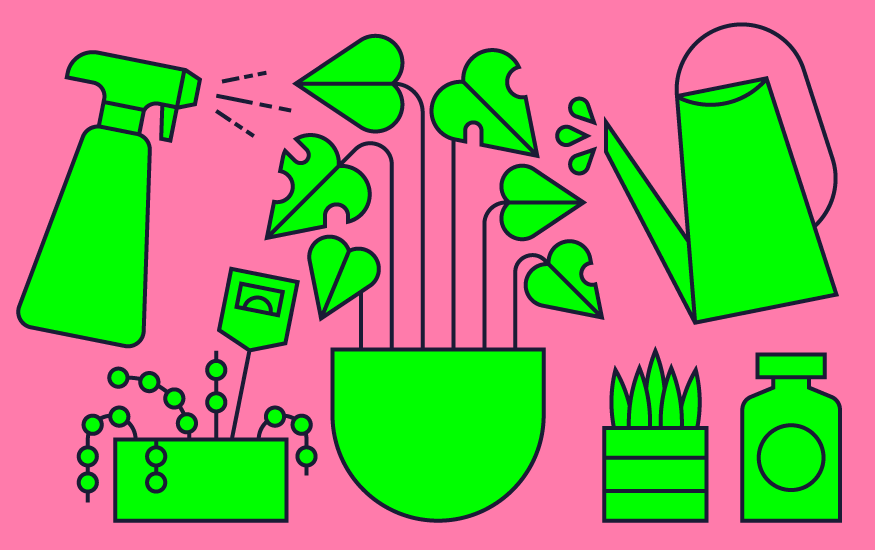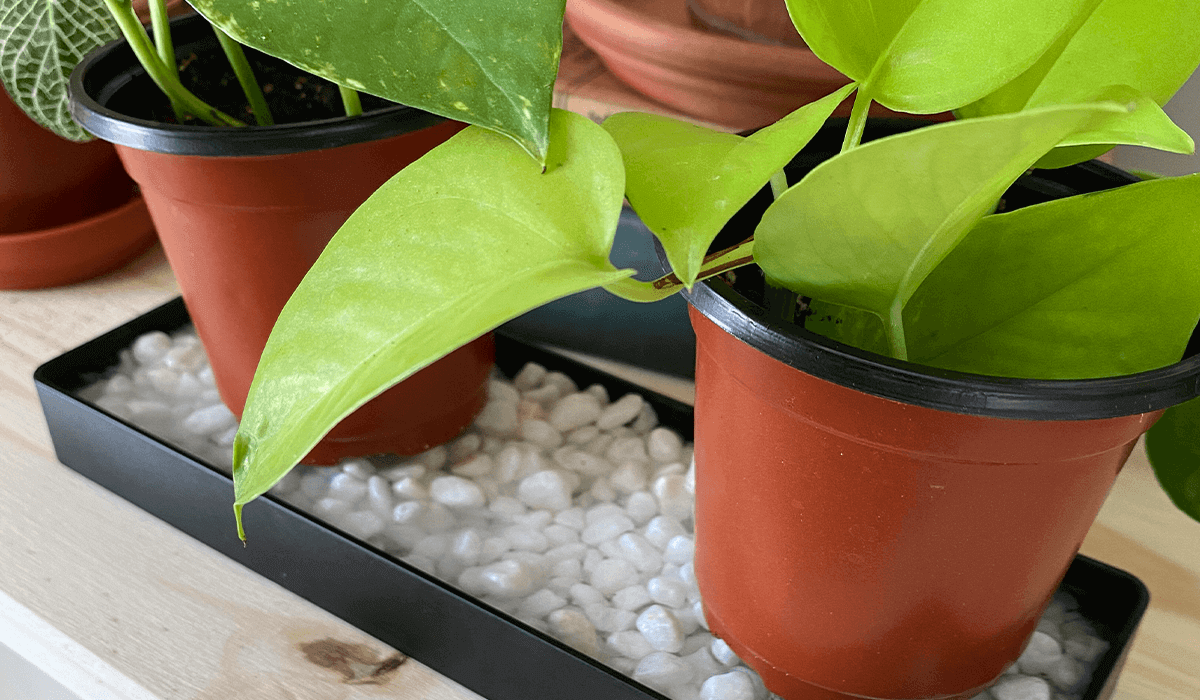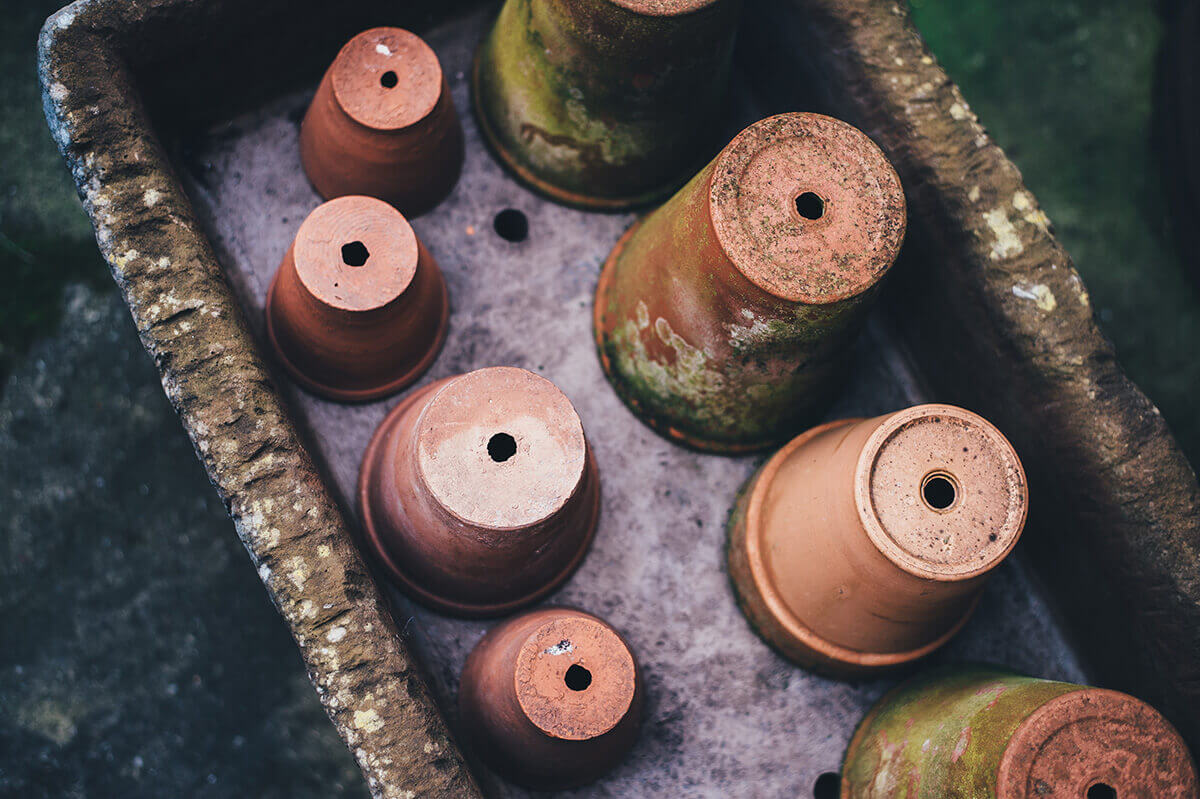Whether you’re just getting started with your indoor garden or you’re looking to grow your already impressive plant collection, there are a number of inexpensive tools that you can add to your arsenal to make your life easier and to help your roommates thrive.
So before you go out and purchase a plant for every shelf in your house, gauge your daily/weekly capacity to care for your collection, and consider the following tools to help you along the way.
1. Soil Moisture Sensor Meter
Soil moisture meters are a great tool for measuring how moist your plant’s soil really is. Many experienced indoor growers would recommend simply sticking your finger down into the solid roughly 1-2 inches deep, but sometimes the dampness goes deeper. Soil moisture meter sensors are an expensive tool that can tell you what’s really going on down below without the mess. The two-prong meters will even test soil PH level and light intensity.

2. Long Spout Watering Can or Vessel
Have you ever tried watering your plant using a standard glass tumblr? It’s messy and not at all accurate. It’s best to get yourself a proper watering can (preferably one with a long spout to ensure the water gets through the leaves to the soil, where it needs to be). These watering cans are often made from stainless steel or plastic and come in a variety of sizes.
If you happen to be an upcycler and a wine drinker, hang on to your bottles and clean them thoroughly. These also make effective watering vessels.
3. Pruning Shears (aka, plant scissors)
Many new plant parents bring their first plant in and don’t realize that there will come a time when they have to trim their new friend’s leaves. Either to help it thrive… or to help it survive. It is crucial to prune with a sharp and clean tool to avoid plant related diseases and insect damage.
There are a variety of reasons why we prune our plants: most plant owners use them, to remove dead leaves and flowers to avoid plant disease or pest issues. But if you want to level up your plant care game, you could also use them to encourage growth or branching (depending on your #plantgoals). A good pair of standard scissors works just as well. Whatever you use, just be sure it’s sharp and clean to avoid contamination. We recommend having a dedicated set of pruners on hand is the way to go.
4. Mister
Sometimes the humidity in our homes is not enough for our green buddies. With changing seasons and our need to control our indoor environments with forced heated air or A/C, indoor flora could go into shock. Low humidity can often foster the development of certain pests like spider mites, particularly if a plant is near a heating duct where the humidity might be even lower. Give them a quick misting to keep them hydrated and make them feel like their back at home in the Amazon. These can be helpful if you experience a pest problem and have to administer DIY insecticidal soap to spray in those hard-to-reach crevices of your plant.
5. Garden Stakes or Bamboo Stake
No matter how many plants you have. The day will come when you have to repot them or pot some of your pruned stems for propagations. This can be a messy process. Keeping things clean can keep things cool between you and your housemates. Garden repotting mats are an awesome compact solution to help you keep the mess contained. These mats are super lightweight and come in a variety sizes and can be stored away in a compact area when you’re done. A not-so-attractive alternative is an empty beer box… works just the same.
5. Neem Oil
Neem oil is extracted from the seeds of neem trees and is a natural pesticide. We often shy away from Antiseptic soap due to its potential toxic nature. Neem oil is not only extremely effective, but it can be safely sprayed on vegetable plants without leaving any dangerous residue behind in a concentrate form and has to be mixed with water before application. Often sprayed with a mister, neem oil will help you fend off pest problems and also doubles as an effective leaf shine to keep your plants looking super attractive and healthy. There are a variety of brands available on the market, but due to its concentrated nature, be sure that you mix it with the correct amount of water. It’s often suggested to water it down completely.
Indoor gardening is a very rewarding and therapeutic pastime… but it can also be stressful once you’re emotionally invested. Having the right indoor gardening tools on hand makes this process a joy and ensures that you’re prepared for any situation that may come up. Make sure you’re equipped with the goods you need to make your garden thrive.


